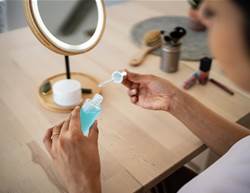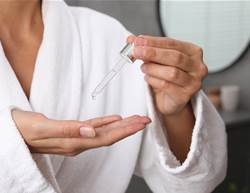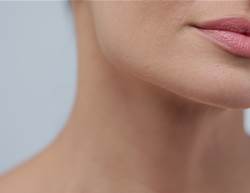What is it?
Retinol is a skincare ingredient derived from vitamin A and is one of the few things that has become unequivocally proven to make a difference to skin. In the 1950s, retinol’s big brother, the retinoids, were found to treat acne. When doctors noticed the radiant side effects, the compounds were co-opted into the anti-ageing market, but only by prescription as they’re so strong.
Milder variations found their way into the mainstream, and as the most common of these was retinol, its name broadly became the term for the whole category. You may also see retinyl palmitate, retinaldehyde, and various retinoates, but retinol is the catch-all for over-the-counter derivations of vitamin A.
How does it work?
Retinol increases epidermal turnover, meaning cells die, slough off and leave room for beautiful new skin beneath. Cells do this anyway, but with a vitamin A derivative it happens faster, so you can get a noticeable change. In the US, dermatologists coined the term ‘retinoid glow’ to describe the smooth, clean complexion that rewarded patients using this category of product.
Why use it?
Its cell-renewing action means retinol tackles pretty much every surface skin problem, from pores, blackheads, and spots to fine lines and pigmentation. Studies also show vitamin A derivatives have a thickening effect, so it’s possible retinols can help plump up your face to some extent, as skin acquires a better structure.
Who should use it?
If you’re frustrated with acne, sun spots or wrinkles, talk to a dermatologist about getting a prescription for stronger retinoids. If you’re just unhappy about the overall texture of your skin, try an over-the-counter product containing retinol. However, neither will satisfy anyone whose primary issue is loss of volume or sagging.
How do you use it?
Retinol comes in different forms – oils, serums, creams – so let the medium dictate the message. While it suits most skin types, retinol can cause sensitivity. So try one application every three days and build it up.
When should you use it?
Apply your product at night after cleansing. If you’re using an acid toner, switch to micellar water for a month and then reintroduce it. Experts advise being more SPF diligent when using retinol, as increased sensitivity lowers the skin’s threshold for UV damage.
Anything else?
It’s worth persisting with your retinol products for three months, as that’s the time it takes skin to adjust. After that, it’ll be thicker, its natural response to UV light will return to normal, and any redness and sensitivity should subside.
Try these...
1. La Roche-Posay Redermic Retinol Anti-Ageing Moisturiser 30ml
Ideal for sensitive skin, this night cream helps to smooth wrinkles, reduce fine lines and fade age spots.
2. Elizabeth Arden Retinol Ceramide Capsules 60 Piece Set
Each capsule delivers a potent dose of retinol and peptides within a silky, hydrating serum for plump, smooth skin.
3. Olay Regenerist Retinol24 Night Eye Cream, 15ml
Wake up to brighter eyes with this silky cream that reduces dark circles, wrinkles, and fine lines.
4. Strivectin Strivectin STAR Light Retinol Night Oil
A nourishing, dry-finish oil that corrects the look of fine lines, wrinkles, texture, and uneven skin tone– all while you sleep.










